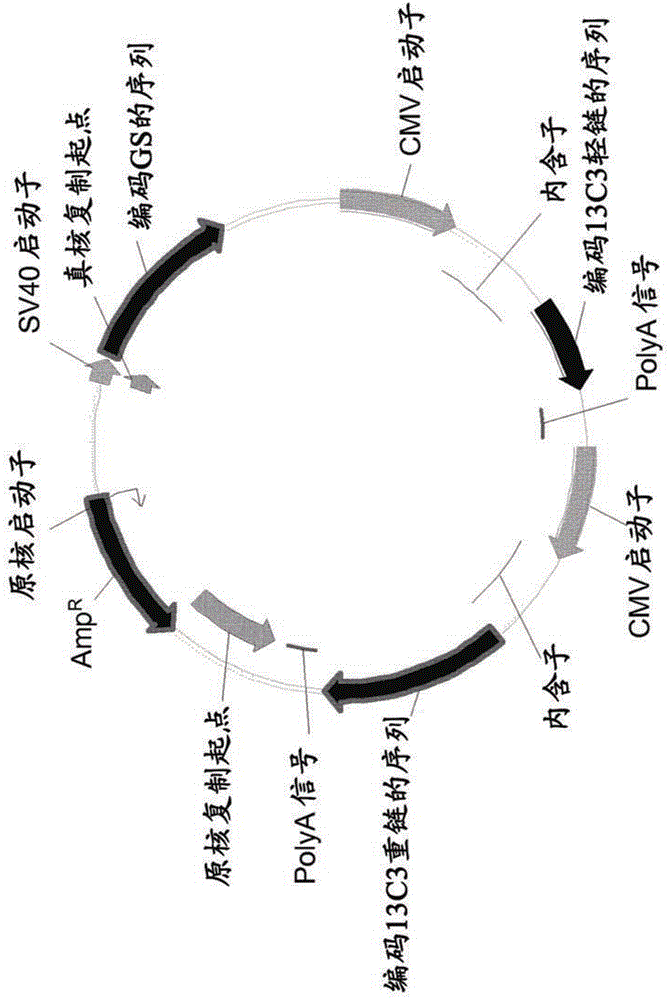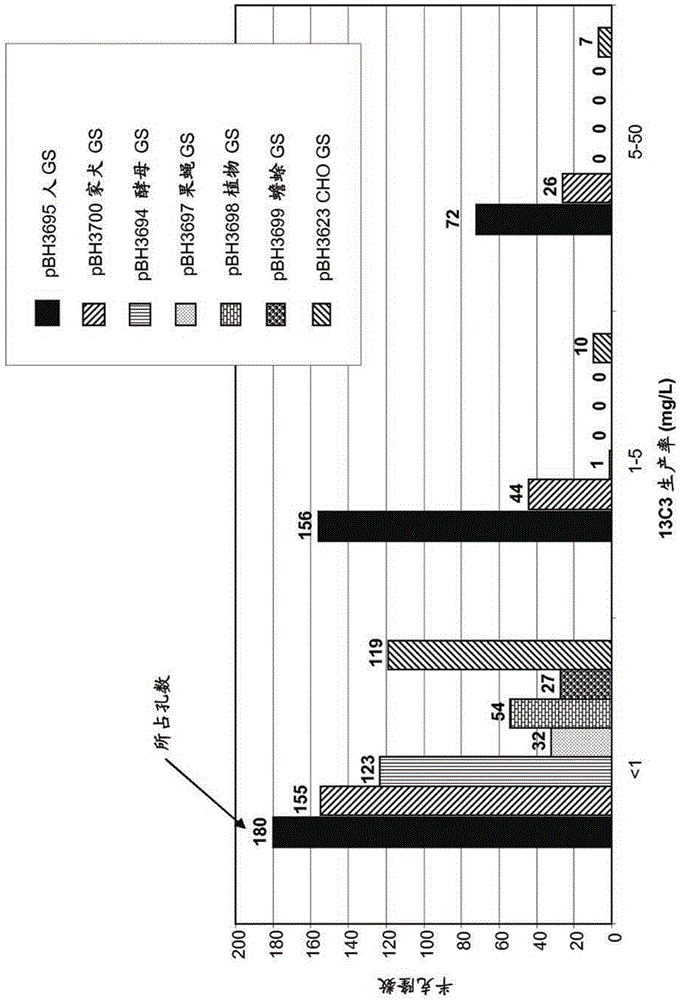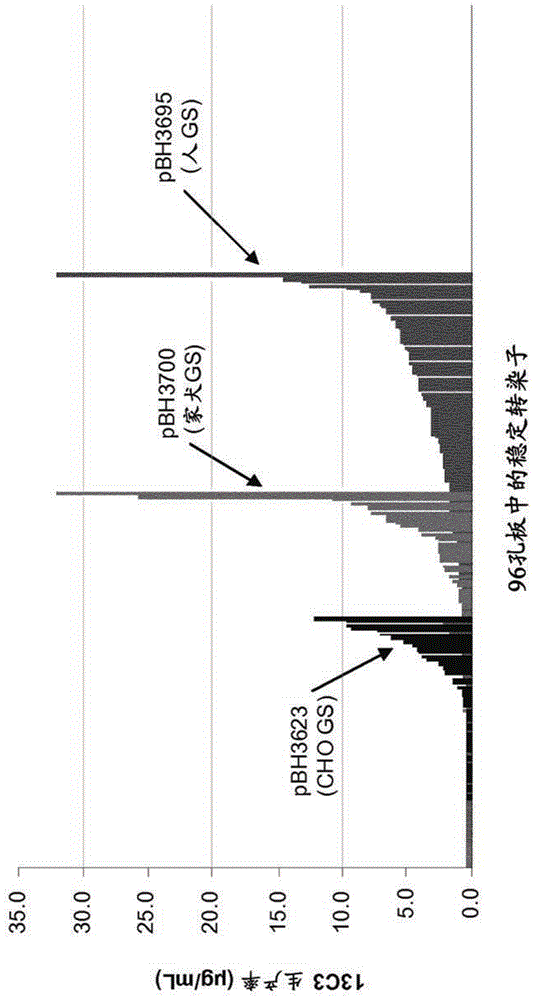Cho expression system
A technology of expression cassettes and cell lines, applied in the field of DNA vectors, can solve the problem that the precise sequence is not disclosed, etc.
- Summary
- Abstract
- Description
- Claims
- Application Information
AI Technical Summary
Problems solved by technology
Method used
Image
Examples
Embodiment 1
[0161] Example 1: Identification of improved results in GS production
[0162] The inventors aimed to develop new vectors for expression and production of recombinant proteins in Chinese Hamster Ovary (CHO) cell lines. A set of seven vectors was designed as described below.
[0163] Two cDNAs encoding the humanized form of the 13C3 antibody (one cDNA encoding the heavy chain of 13C3 and the other cDNA encoding the light chain of 13C3, the combination of which forms the humanized 13C3 antibody) were used as reporters for evaluating carrier quality. The murine 13C3 antibody is an antibody that specifically binds the protofibrillar form of human β-amyloid as described in WO 2009 / 065054. As further used herein, the term "13C3" refers to a humanized form of the murine 13C3 antibody.
[0164] The seven vectors are schematically presented in figure 1 . All eight vectors contain:
[0165] - a sequence encoding GS, placed under the control of the early SV40 promoter;
[0166] -...
Embodiment 2
[0190] Example 2: Confirmation of the advantageous properties of using a vector encoding human GS in a second CHO cell line
[0191] The above experiments were repeated using a CHO cell line called "9E4", which is suitable for industrial production of recombinant proteins.
[0192] The 9E4 cell line was established from a clone of the CHO-K1 cell line by a single-cell cloning process. The CHO-K1 cell line was obtained by Puck in 1957 and has been deposited with the ATCC under accession number CCL-61. The CHO 9E4 cell line appears to express an endogenous and functional GS protein because this cell line is able to grow in the absence of glutamine. Thus methionine sulfoximine (msx) should preferably be used for selection of transfected clones.
[0193] The vector was introduced into the 9E4 cell line by nuclear poration. The first experiment was performed using the six vectors constructed in Example 1 (ie pBH3695, pBH3700, pBH3694, pBH3697, pBH3698 and pBH3699). The selectio...
Embodiment 3
[0195] Example 3: Transient expression of X14 in HEK 293 using pBH vector based on human GS and human CMV promoters
[0196] In this experiment, human GS containing the sequence SEQ ID NO: 1 placed under the control of the SV40 promoter, and human GS containing the sequence encoding human or mouse X14 receptor (also called C-type cDNA of lectin domain family 14, member A (CLEC14A), and a vector of a single expression cassette with NCBI reference numbers NP_778230.1 and NP_080085.3) and polyadenylation sites, respectively. The vector containing the cDNA encoding the human X14 receptor is hereinafter referred to as the pBH4590 vector, while the vector containing the cDNA encoding the mouse X14 receptor is hereinafter referred to as the pBH4589 vector.
[0197] The pBH4590 vector, pBH4589 vector, or control vector (ie, an irrelevant plasmid vector) were introduced into HEK 293-FS cells by transfection with Jet PEI as described by the manufacturer for Poly Plus transfection.
[0...
PUM
 Login to View More
Login to View More Abstract
Description
Claims
Application Information
 Login to View More
Login to View More - R&D
- Intellectual Property
- Life Sciences
- Materials
- Tech Scout
- Unparalleled Data Quality
- Higher Quality Content
- 60% Fewer Hallucinations
Browse by: Latest US Patents, China's latest patents, Technical Efficacy Thesaurus, Application Domain, Technology Topic, Popular Technical Reports.
© 2025 PatSnap. All rights reserved.Legal|Privacy policy|Modern Slavery Act Transparency Statement|Sitemap|About US| Contact US: help@patsnap.com



